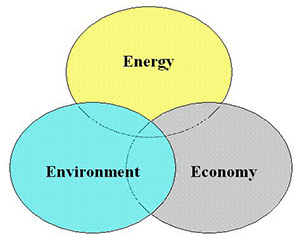About Moritomi Laboratory
Our laboratory has started since Associate Prof. H. Moritomi was assigned to Nishimura Laboratory, at the present day being Uemiya Laboratory/Materials Chemistry Course/Department of Chemistry and Biomolecular Science/Faculty of Engineering/Gifu University/Japan, in 1995. Moritomi laboratory has spined off from Nishimura Laboratory as well as the start of Division of Environmental and Renewable Energy Systems/Graduate School of Engineering/Gifu University/Japan in 1999 because Associate Prof. H. Moritomi has risen in rank to Professor. Associate Prof. S. Kambara has been assigned to our laboratory from Idemitsu Kosan Co., Ltd., Japan in 2003. Assistant Prof. K. Kumabe, being the first graduate of our laboratory and the doctoral graduate of our division in 2005, has assigned to our laboratory from Nagoya University, Japan in 2009. Kambara laboratory has spined off from Moritomi Laboratory in 2013 because Associate Prof. S. Kambara has risen in rank to Professor. Our laboratory finished at 31 Mar., 2018 because Prof. H. Moritomi retired from our University. A cumulative total of 259 students with bachelor's, master's and/or doctor's degree finally graduated from our laboratory by 31 Mar., 2018.
Outline of our laboratory
An electrical energy is mainly produced from primary energy sources such as petroleum, coal and natural gas. However, the utilization of these fossil fuel emits environmental pollutants such as NOx, SOx, CO2 and toxic trace elements. In addition, environmental pollutants are emitted at the production of various goods and the car use. The activity increases the energy use and the environmental pollution. Thus, it is difficult for the energy use (Energy), environment protection (Environment) and economic prosperity (Economy) to be achieved at an instant, being the "tri"-lemma of triple E (Fig.1).
Fig.1 "Tri"-lemma of triple E.
The mottoes of our laboratory through the studies of the development of highly-efficient and environmentally-friendly energy system and of the reduction method of environmental pollutant are as follows:
・to indicate to nation and society and for the "tri"-lemma of triple E to be achieved at an instant
・for students to learn socially desirable minimum manners and have a kindly heart, being "love."
Category of our study
Thus, our laboratory has three study category, as shown in Fig.2. Almost our studies are carried out as the projects of the New Energy and Industrial Technology Development Organization (NEDO), the Ministry of the Environment and Japan Science and Technology Agency (JST).
- "Category of New Energy"
The development of highly-efficient production methods of hydrogen, liquid fuel, carbide and electricity with fuel cell from biomass and wastes are the study of thier reaction mechanism are performed.
- "Category of Environmental Fate and Cleaning"
The mechanism of the forming, distribution and suppression of trace metals, the desulfurization, denitration and deodorizing using carbide, plasma and photochemistry and the simulations of the material flow and atmospheric dispersion of mercury and the heat are studied.
- "Category of Materials and Microparticulate"
The recycle of carbon fiber reinforced plastic (CFRP),the polymer coating using photochemistry, the development of lithium cell using polymer material and the effect of toxic trace elements on the characteristics of fuel cell power generation are studied.
- Fig.2 Three study category in our laboratory.



